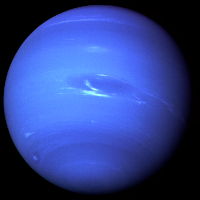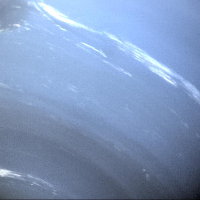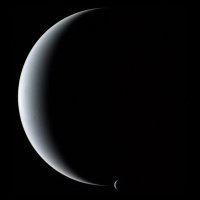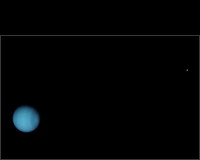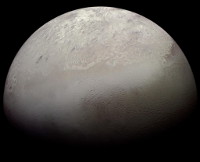Math
After the discovery of Uranus, mathematicians calculated its orbit. Eventually, astronomers noticed that Uranus was drifting away from its predicted path. They realized that the gravity of another planet could be affecting it. One mathematician named Urbain Le Verrier performed the difficult calculations to figure out where that other planet would have to be. It was soon found, right where he predicted. Neptune is bright, so it can easily be seen in even a small telescope. However, it is so far away that you need a huge observatory to see any details at all. All the close-up pictures we have were taken by just one spacecraft.
Ices
Neptune is made up of water, methane, and ammonia, which astronomers call ices, whether or not they are actually cold enough to be frozen. In Neptune, they form a hot, slushy fluid under a thick hydrogen and helium atmosphere. The blue color in the atmosphere comes from traces of methane high in the air. There is probably a small, rocky core, but no surface other than that. Some scientists consider it a gas giant, while others call it an ice giant (along with Uranus).
Moons
The only large moon of Neptune is Triton. It was found just weeks after the planet was first seen. The other moons are much smaller and fainter, and it took over 100 years for the second moon to be found! We now know of 13. Triton is very strange for a large moon in that it orbits backwards. That leads astronomers to suspect that it was not formed with Neptune, but was captured by its gravity later on. The violent, changing gravity during that capture would probably have scattered or destroyed any small moons that were already in the system. The rest of the current moons are much newer than the planet, and formed from a disk of debris.

